Kamaka rainbowfish - Melanotaenia kamaka
Scientific name: Melanotaenia kamaka
Common name: Kamaka rainbowfish
Family: Melanotaeniidae
Usual size in fish tanks: 6 - 9 cm (2.36 - 3.54 inch)
014
Recommended pH range: 6.8 - 8.2
Recommended water hardness: 5 - 15°N (89.29 - 267.86ppm)
0°C 32°F30°C 86°F
Recommended temperature range: 24 - 28 °C (75.2 - 82.4°F)
The way how these fish reproduce: Spawning
Where the species comes from: Oceania
Temperament to its own species: peaceful
Temperament toward other fish species: peaceful
Usual place in the tank: Middle levels
Overview
Melanotaenia kamaka (Kamaka rainbowfish) is a small, peaceful rainbowfish endemic to Lake Kamaka on the Raja Ampat Islands, West Papua (Indonesia). Males develop metallic steel-blue bodies with subtle gold sheen, while females are smaller and paler. Active schooling behavior and constant mid-water movement make this species ideal for planted community aquaria.
Care & Tank Setup
- Group size: Keep in groups of 8–10+ (sex ratio ~1M:2F) to reduce male sparring and bring out natural displays.
- Tank: Minimum 90 cm length / 100–120 l for a group; long tanks with open swimming lanes and dense planting at the sides/back.
- Water: pH 6.8–8.2, hardness 5–15 °dGH, temperature 24–28 °C (75–82 °F). Stable, well-oxygenated, low-nitrogen water is essential.
- Aquascape: Heavily planted with fine-leaved stems and floating plants for diffuse light; dark substrate enhances coloration. Tight-fitting lid—excellent jumpers.
- Maintenance: Weekly 30–40% water changes; gentle flow with good surface agitation.
Diet & Feeding
Omnivorous micro-predator; not fussy but thrives on variety:
- Staples: High-quality micro-pellets and flakes formulated for rainbowfish.
- Frozen/live: Daphnia, baby brine shrimp, Cyclops, black mosquito larvae, finely chopped mysis.
- Vegetable matter: Spirulina flakes or gel foods a few times weekly to support color and digestion.
- Avoid: Heavy, fatty or tubificid worms as a routine food (risk of digestive issues).
Behavior & Compatibility
- Temperament: Peaceful, active mid-water shoaler; best with similarly sized, non-aggressive fish.
- Good tankmates: Other small rainbowfish, peaceful livebearers, rasboras, Corydoras, small Loricariids, dwarf gobies.
Sexing
Males are larger with deeper bodies, more intense steel-blue coloration, and may show extended dorsal/anal rays; females remain smaller and duller.
Breeding
Egg-scattering spawner with adhesive eggs deposited among fine plants or spawning mops. Condition breeders on live/frozen foods, then collect eggs daily (or move adults after spawning begins). Incubation typically 7–12 days at 26 °C. Start fry on infusoria/rotifers or powdered fry food; introduce newly hatched brine shrimp after a few days. Gentle filtration and pristine water are critical.
Lifespan
Typically 6–8 years with excellent water quality and varied diet.
Short description
M. kamaka is a compact, shimmering rainbowfish that rewards attentive care with cohesive schooling and subtle, elegant coloration. Provide a roomy, planted setup, steady warm temperatures, and a varied micro-diet for best results.
At-a-Glance (Care Box)
- Size: Males 7–9 cm TL; females 6–7 cm
- Temperament: Peaceful shoaler; keep 8–10+
- pH: 6.8–8.2 | GH: 5–15 °dGH
- Temp: 24–28 °C (75–82 °F)
- Tank: 90 cm / 100–120 l minimum for a group
- Diet: Micro-pellets, flakes, daphnia, BBS, cyclops; some spirulina
- Breeding: Egg scatterer; 7–12 days to hatch
- Lifespan: 6–8 years
Pictures
Bought by aqua-fish.net from jjphoto.dk.
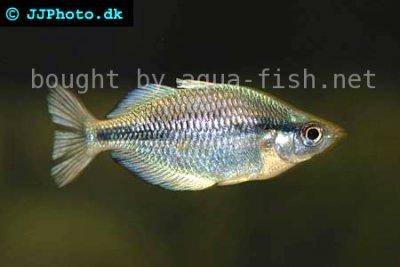


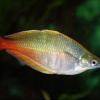 Bleher’s
Bleher’s 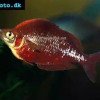 Red
Red 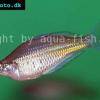 Ramu
Ramu 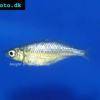 Wanam
Wanam 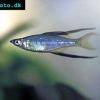 Threadfin
Threadfin 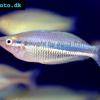 New
New 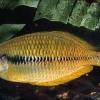 Yakati
Yakati 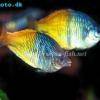 Boesemani
Boesemani 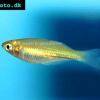 Crimson
Crimson 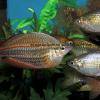 Australian
Australian 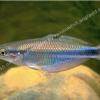 Goldie
Goldie 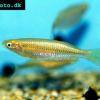 Slender
Slender 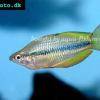 Lake
Lake 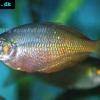 Irian
Irian 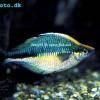 Lake
Lake 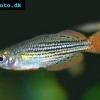 Dwarf
Dwarf 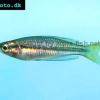 Black
Black 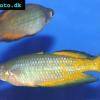 Parkinsoni
Parkinsoni 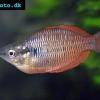 Sunset
Sunset 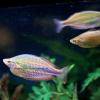 Neon
Neon 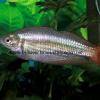 Western
Western 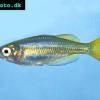 Inornate
Inornate 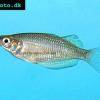 Ruby
Ruby 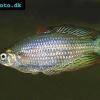 Eastern
Eastern 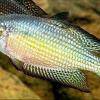 Desert
Desert 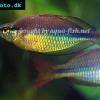 Regal
Regal